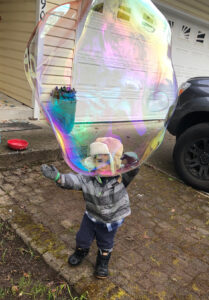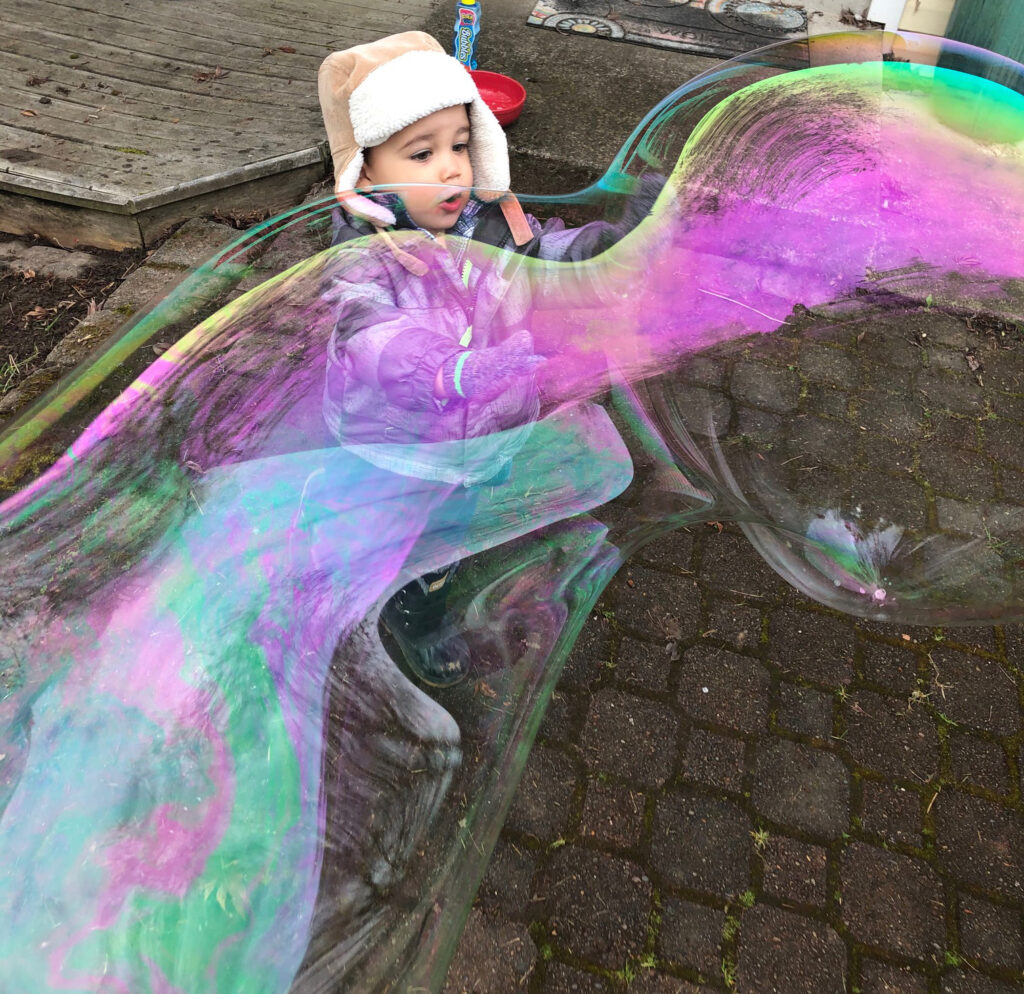 |
I recently posted suggestions from Steve Spangler for bubbles.
My niece called for a bubble recipe as she played with her son and I thought it can be such a fun activity I’d find more resources for you. Just like my last blog, my source is the Exploratorium I’ll list activities from simple materials to uncommon materials like dry ice. |
Make giant bubbles with a Bubble Tray
What if you: change the shape of the wire? add yarn to the wire? add string to the wire? blow softly or with more force into the sheet of soapy water inside the wire?
Chenille stems, straws, and bubble solution combine to create Soap-Bubble Shapes.
What if you: change the size of the straws? the number of straws? the shapes you’re creating? dipped slowly or quickly in the solution? waited to see how each part of the bubble shape pops?
Want to try bubbles that don’t require soap? Use vinegar and baking soda in a zip bag to create a Bubble Bomb.
What if you: change the amount of each ingredient, starting with less not necessarily more? use a larger or smaller bag? cold water instead of warm water? use a different material to create your packet?
Carbon dioxide from dry ice is needed to create a Bubble Suspension
This is a GREAT activity if you have the dry ice. I’ve tried it with a tub of vinegar that I sprinkle baking soda into and have had some success. It helps if you keep the air currents in the room from pushing the carbon dioxide out of the container. A deeper container seemed to work best if I tried with the vinegar and baking soda. Good luck!

